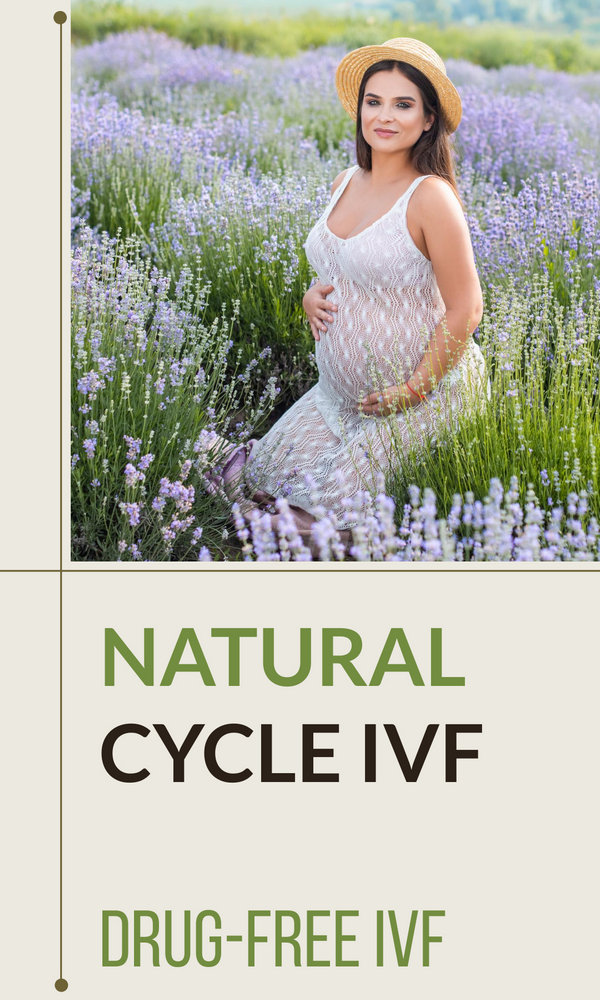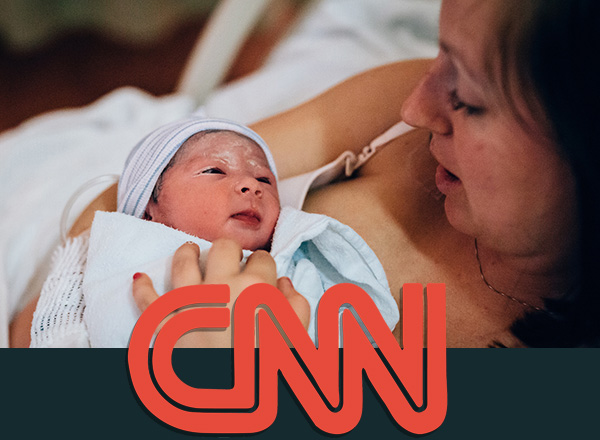Natural Cycle IVF
What is natural cycle IVF
The natural cycle IVF is the fertility treatment during which only one egg is retrieved from the ovary without the use of any stimulation hormone protocol.
The development of the follicle is monitored with ultrasound and when the egg is matured, the egg transfer is performed. The possibility for pregnancy from a natural cycle IVF is lower than that of conventional IVFs using pharmaceutical protocol, but, is a good choice for women who do not respond adequately to hormone stimulation even with increased doses.
In the last few years, we have been using the competitor Ganirelix or Cetrorelix when the follicle reaches 12 to 14 mm, and the post-midnight injection HCG (Human Chorionic gonadotropin) when the follicle reaches 17 to 21 mm in size.
The first successful IVF procedure was performed in an unstimulated natural cycle
The first in vitro fertilization (IVF), which took place back in 1978, was performed during a natural cycle, that is, with the retrieval of a naturally developed egg.
Over the years, however, this method was abandoned and later evolved into the standard IVF where, with the use of drugs, multiple egg production is achieved with clearly better results in terms of gestation.
In general, natural cycle IVF is no longer so highly recommended, as the success rates of traditional IVF are higher when the number of available eggs increases.

Free Online Consultation with Dr Thanos Paraschos and his team
What is the procedure?
IVF procedure in a natural cycle is simpler because hormonal stimulation of the ovaries is not required. See the stages in detail:
The woman is monitored with ultrasound and hormonal blood tests during her cycle (about three times), and as soon as the predominant follicle reaches the right size (larger than 17 mm), then a single dose of HCG is administered once at midnight in order for the egg contained in the follicle to mature.
On the 2nd day (i.e. 36 hours later), the woman must go to the assisted reproduction clinic and under light anesthesia/sedation, the egg transfer is performed with the aid of ultrasonic guidance. Soon after, she can return to work without feeling the slightest discomfort.
If one or more eggs are found, then the ICSI (Intra Cytoplasmic Sperm Injection) with the partner’s sperm is performed.
Once the egg is fertilised, the embryo is cultivated in the (in vitro) lab and if its development is appropriate (60% of the cases), it is transferred to the uterus on the 2nd or 3rd day of culture.
What are the chances of success with a natural cycle?
The most important question that concerns every woman is how likely is a pregnancy with a natural cycle, that is, what is the success rate with a natural cycle IVF.
According to a 2002 study based on 1800 natural cycles, the results were:
- pregnancy at 7.2% of the total number of cycles
- pregnancy at 15.8% of the cycles that reached embryo transfer
This probability is not to be considered a significant one, if we take into account the fact that the likelihood of pregnancy after a standard IVF is higher than 60% for young women (see IVF success rates).
Unfortunately, with natural cycle, not all cycles provide an egg and in 20% of the fertilised eggs, no embryo is developed.
After 4 consecutive (back-to-back) natural cycles, the cumulative percentage of pregnancy can reach up to 46%, however, this figure refers mainly to young women.
Which women are good candidates for natural cycle IVF?
- Women of younger ages with a good prognosis who would prefer to limit the amount of medication and undergo an initial and less invasive treatment. Provided that the infertility problem has solely to do with their partner (male infertility factor) or due to blocked fallopian tubes.
- Women over 40 with low ovarian reserve, especially if they were unresponsive to a former IVF protocol with hormonal stimulation managing to produce only one or minimum number of eggs. There really is no point in administering high dosages of medication if we are to achieve poor results and not obtain more egg follicles. Before turning to an IVF method using donor eggs, these women can attempt a number of IVF cycles using their own, naturally produced egg.
- Women with a history of hormone-sensitive cancer who are not able to receive gonadotropins.
You can read about natural cycle IVF and the experiences of women having gone through this procedure in various forums. Common are the accounts of women who had to endure several cycles before they were able to collect a satisfactory embryo, ultimately resulting in both an expensive and disheartening procedure. However, it could be the only solution before egg donation.
What are the benefits of a natural cycle IVF?
- no hormone intake for stimulation of ovaries
- zero probability of ovarian hyperstimulation syndrome
- minimal risk of multiple pregnancy (twins or more)
- costs less
Furthermore, the psychological pressure on the woman is significantly reduced, which, coupled with the feeling that she can achieve pregnancy in a more ‘natural’ way, can help some women in regaining their lost confidence, therefore, making the entire procedure more comprehensible and with less frustration involved.
How much does a natural cycle IVF cost?
In general, the cost is less because the method is simpler and fewer drugs are utilised. You can check the cost of natural cycle IVF in the price list we provide.
Can a natural cycle IVF be performed at 45?
The main reason why it is difficult for a woman over 45 to have a child is due to poor quality of the eggs, or more specifically, the high likelihood of genetic anomalies in her eggs, which leads to failure of impregnation or implantation, as well as higher risk of miscarriage. The prognosis is poor if her partner is her age or older, because age increases infertility in both men and women.
Egg donation is probably preferable since the chances of getting pregnant with IVF in your natural cycle at 45 are minimal, maybe 1%. In these instances, IVF with egg donation (also referred to as ‘IVF with donor eggs’) is a better option with very high success rates.
Natural cycle IVF: Yes, or no?
According to ESHRE guidelines (European Society of Human Reproduction and Embryology), there is no reason to favour natural cycle over stimulation protocols because IVF in a natural cycle usually has lower success rates. However, at no age is it absolutely contraindicated. Natural cycle IVF is an option for almost all patients. Special conditions play a major role and so do the patient’s choices.

